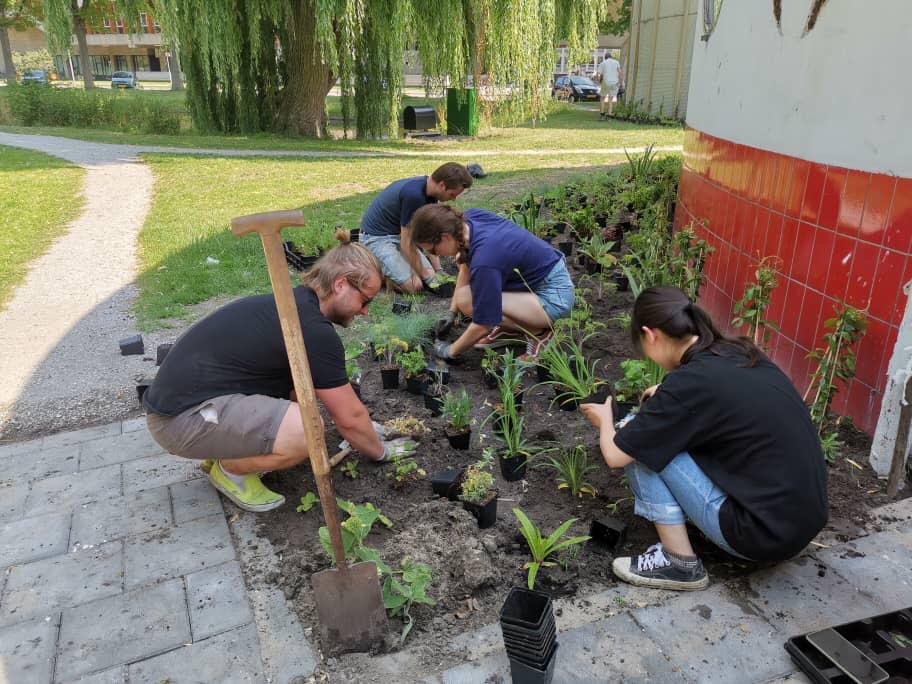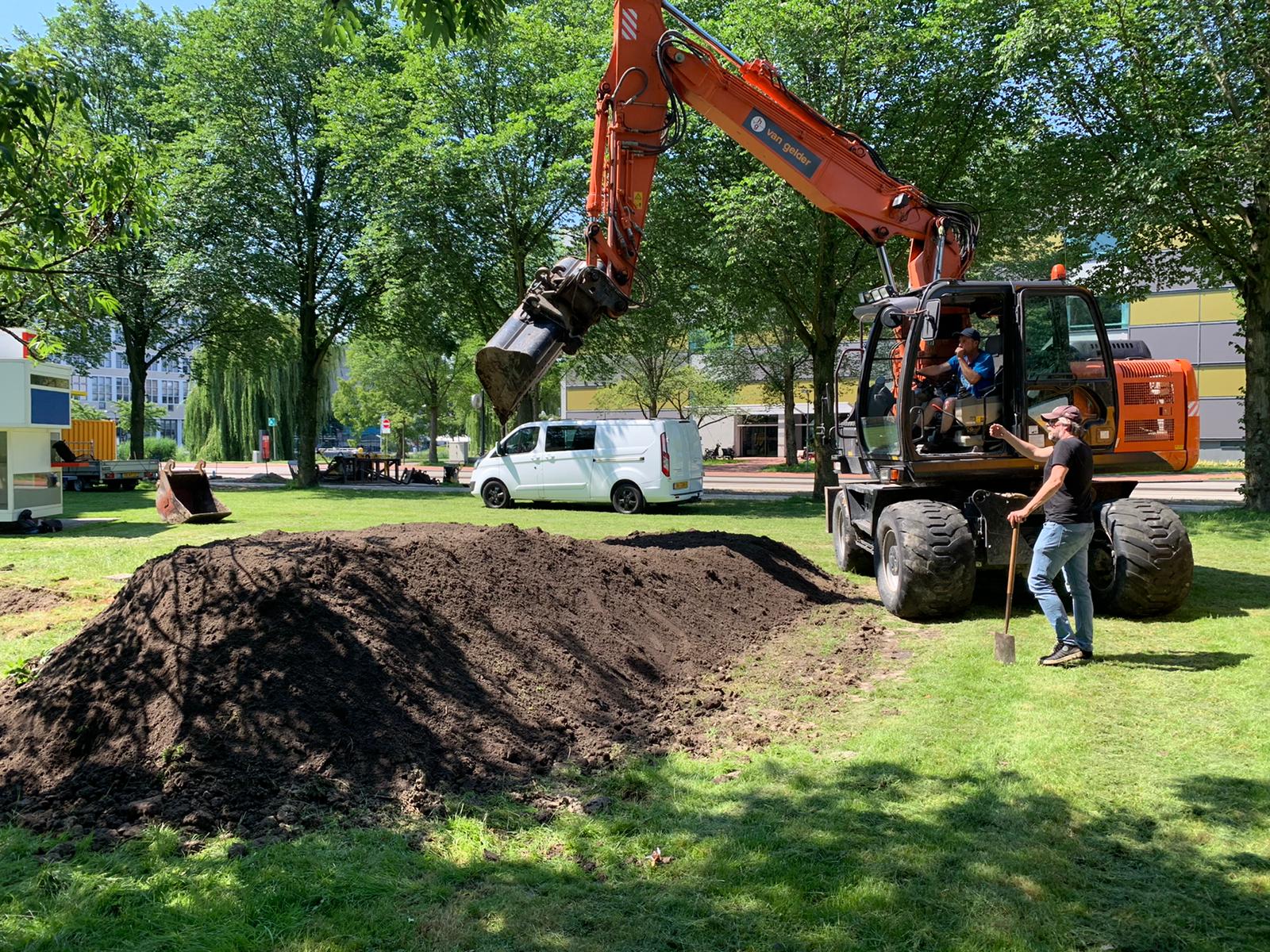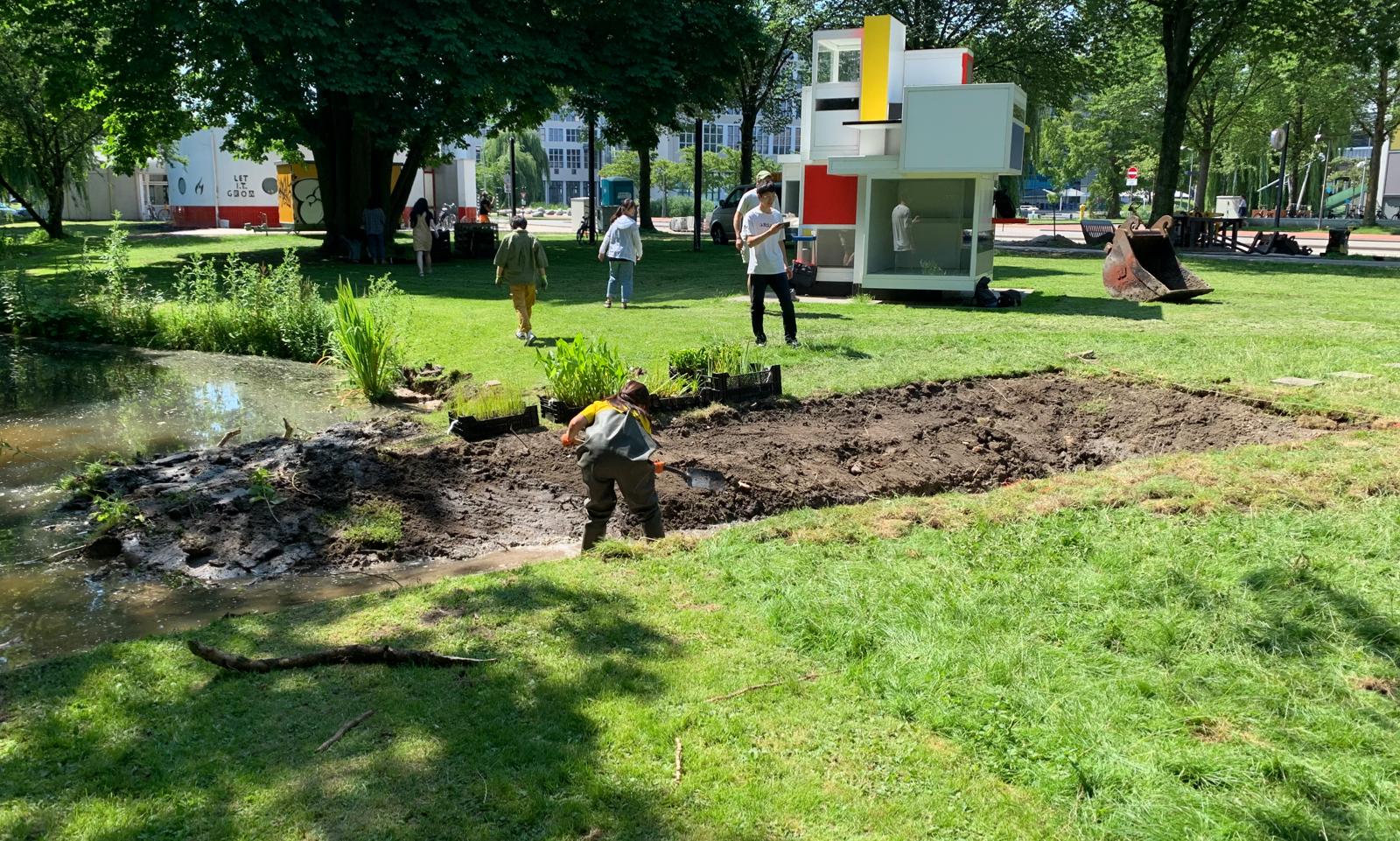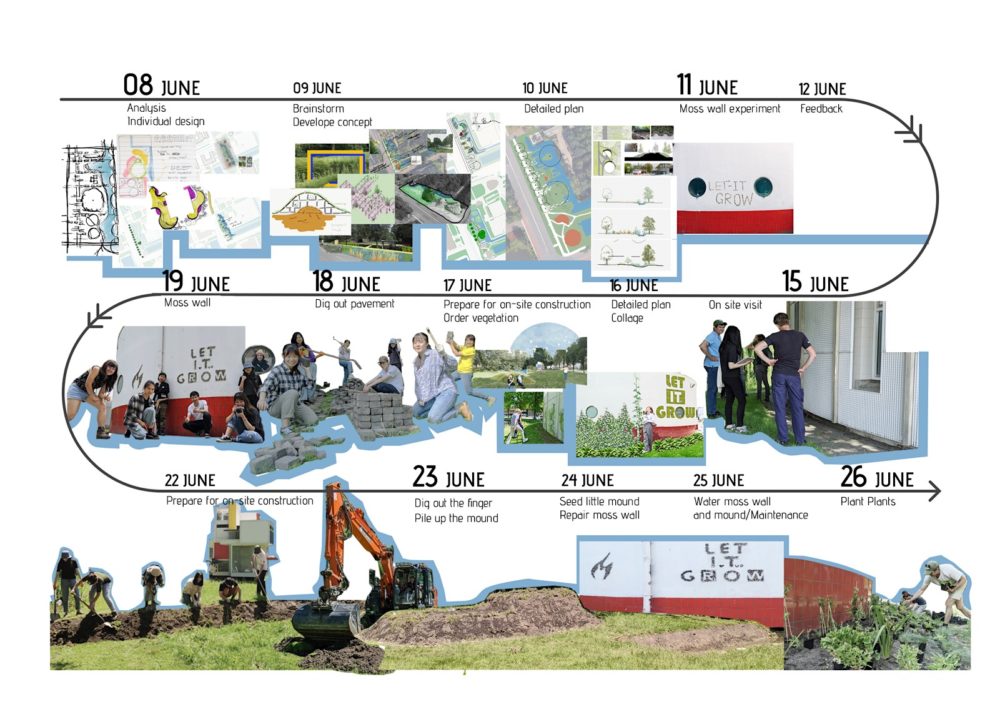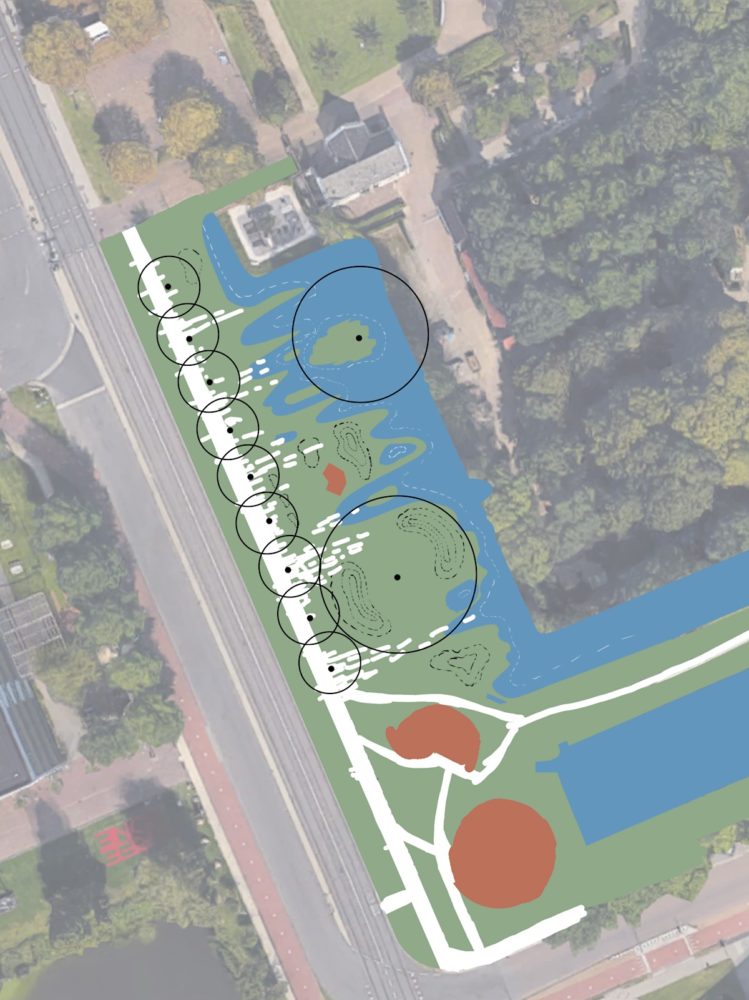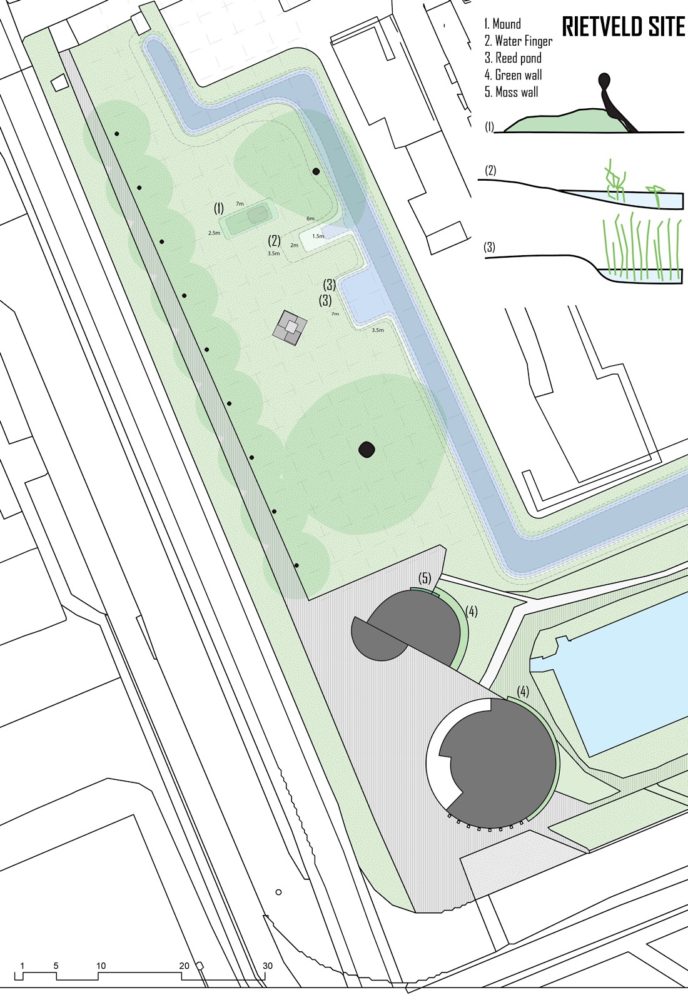Rietveld monument
The Rietveld site is designed to blur the boundaries and provide a gradient transition between nature and man-made infrastructure. We follow the basic grid form of Rietveld, using straight lines to strengthen it. The water body is extended towards the pathway and attracts visitors inside to appreciate the vegetation with different conditions. The soil that is dug out is used to create a mound. The shady areas behind the two buildings are de-paved and enhanced with climbers.
To blur the boundaries, natural planting methods are applied to the vegetation design. Thus, we use mainly Dutch native plants with different habitat on our site. Two kinds of Typha, Nymphaeaceae and Iris are planted in the water finger randomly according to water depth. A mix of local seeds is sowed on the mound created with soil digging from the water finger and paved area. Meanwhile, to show the transition of sunny to shady zones around the buildings, we choose vegetations with multiple colour appearances in foliage according to the illumination length. So hopefully we can create a clump of colourful climbers for the white wall. Apart from the climbers, ground cover and moss are also planted around the buildings. With the combination of structure plants (Digitalis and Iris for instance) and decoration infill (eg. Festuca and Pteridophyta), we planted a little shade-garden to connect the building with nature around.
STUDENTS
Kailun Qi
Ran Yan
Yu Zheng
Yayun Gao
Pu Jiang
Hanvit Lee
Xinyu He
Farnoush Bazrafkan
Liaw Su Xin
